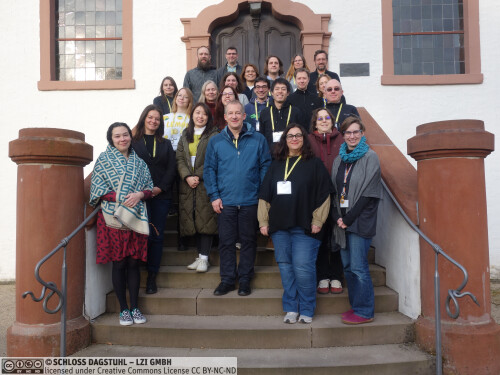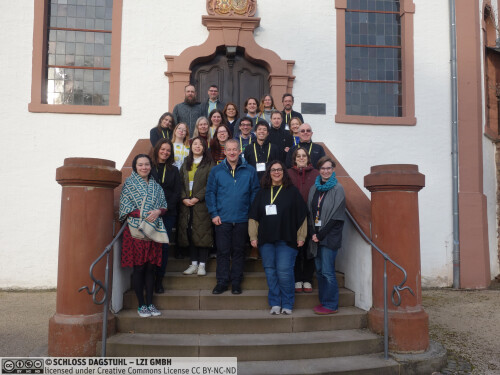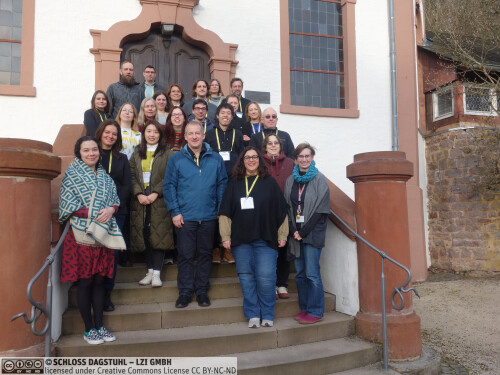Dagstuhl Seminar 25082
Visualizing Data on Non-Flat, Non-Rectangular Displays
( Feb 16 – Feb 21, 2025 )
Permalink
Organizers
- Anastasia Bezerianos (Université Paris-Saclay, INRIA, CNRS, FR)
- Raimund Dachselt (TU Dresden, DE)
- Wesley J. Willett (University of Calgary, CA)
Contact
- Michael Gerke (for scientific matters)
- Christina Schwarz (for administrative matters)
Shared Documents
- Dagstuhl Materials Page (Use personal credentials as created in DOOR to log in)
The physical screens that we consider when creating visualizations for representing data, making decisions with this data, and learning about our environment - mobile phones and tablets, desktops, or even large wall or table displays - are predominantly flat and rectangular. Nevertheless, technology companies are actively pursuing a wide range of new display technologies, including curved displays, bendable displays, spherical displays, light field displays, cube displays, physical pin-based displays, foldable phones, and even robotic and drone displays. Yet to date, visualization researchers and practitioners have not deeply considered the true potential for these new form factors, nor their challenges when it comes to communicating data.
This Dagstuhl Seminar brought together a diverse set of visualization and human-computer interaction researchers to outline an agenda for visualization on interactive non-flat displays and prepare the visualization research community for a future in which data displays become richer, more interactive, and more deeply embedded in environments. To that end, the seminar paired state-of-the-art talks and show-and-tell activities designed to build familiarity with a wider range of novel display technologies with ideation and design futuring sessions focused on envisioning their visualization potential.
Initial presentations included overviews of a range of new enabling technologies, including light field displays, shape-changing surfaces, and robotic displays, along with late-breaking work in situated visualization and data physicalization. Show-and-tell sessions also featured a diversity of physical and digital display types, with participants demonstrating novel research prototypes and commercial displays that push the limits of current display technologies. To push our vision of possible non-flat visualizations further, seminar participants then engaged in a series of design futuring activities, using both traditional sketching and generative AI tools to envision and elaborate possible future displays, visualizations, and scenarios. Building upon these generative activities, participants then worked together to identify and connect key research opportunities and challenges for visualization on non-flat displays, laying the groundwork for a research agenda for the field and also identifying a variety of targeted follow-up projects.
 Anastasia Bezerianos, Raimund Dachselt, and Wesley J. Willett
Anastasia Bezerianos, Raimund Dachselt, and Wesley J. Willett
"The world is flat and rectangular", at least when it comes to the types of physical screens that we use for representing data and making decisions. The physical screens that we consider when creating visualizations for representing data, making decisions with this data, and learning about our environment, are predominantly flat and rectangular: our mobile phones and tablets, desktops, or even large wall or table displays. Nevertheless, technology is already evolving quickly: curved, bendable, and highly flexible displays, spherical displays, cubed displays, and even drone-based displays have emerged and are commercially available.
These novel types of displays offer new ways to represent and explore data embedded in everyday environments, to communicate and share it. Data communication, through visualization, will be one of the most impactful uses on these future displays, for personal and public use. The rendering of highly personal data is well suited for personalized displays, such as data bracelets, information fabrics, or augmented everyday objects around the home. Public displays with an unusual form factor can be embedded in non-flat architecture or public infrastructure, can be seen from different angles (cubes, spheres), and show information in a way that is more true to the shown data type. As such, these displays also offer lots of opportunities for reaching and engaging the general public.
Thus, non-flat displays obviously come with many new opportunities that need to be explored. However, they also pose perceptual challenges, and it is yet largely unexplored how to actually utilize these novel form factors for data visualizations. In other words, the potential and challenges of these displays for visual data representation remains unexplored.
This Dagstuhl Seminar will pave the road for escaping from the display flatland that characterizes research in visualization, and create a road-map of how to engage with a future in which physical displays will take on a number of different form factors and may become truly ubiquitous. The seminar aims to bring together researchers working in data visualization and fields related to personal informatics, communication, design, as well as ubiquitous, wearable, and mobile computing. It will provide an opportunity for researchers and practitioners to identify the opportunities for a future where visualizations escape from flat and rectangular screens and define a common research agenda for this emerging field.
An immediate goal of this Dagstuhl Seminar is thus to identify opportunities, open problems that need further investigation and to identify priorities for future research in this space. We would like to put an emphasis on the following research questions during the seminar:
- What are new and exciting application scenarios of use for non-flat and non-rectangular displays for data visualization?
- What are new visualization techniques that are possible for non-flat and non-rectangular displays? Do existing techniques need to be adapted?
- How does putting visualizations on non-flat and non-rectangular displays impact how we understand and use them (i.e., affect our perception and decision making)? How can we study this impact?
- What are the challenges in designing and prototyping visualizations for non-flat and non-rectangular displays? How can we address them?
The outcomes of the seminar and our discussions aim to have an impact on visualization research and fields related to communication, design, and to ubiquitous, wearable, and mobile computing.
 Anastasia Bezerianos, Raimund Dachselt, and Wesley J. Willett
Anastasia Bezerianos, Raimund Dachselt, and Wesley J. Willett
Please log in to DOOR to see more details.
- Caroline Appert (University Paris-Saclay - Orsay, FR) [dblp]
- Lyn Bartram (Simon Fraser University - Surrey, CA) [dblp]
- Anastasia Bezerianos (Université Paris-Saclay, INRIA, CNRS, FR) [dblp]
- Tanja Blascheck (Universität Stuttgart, DE) [dblp]
- Nathalie Bressa (Télécom Paris, FR) [dblp]
- Raimund Dachselt (TU Dresden, DE) [dblp]
- Pierre Dragicevic (INRIA - Bordeaux, FR) [dblp]
- Aluna Everitt (University of Canterbury - Christchurch, NZ) [dblp]
- Petra Isenberg (INRIA Saclay - Orsay, FR) [dblp]
- Tobias Isenberg (INRIA Saclay - Orsay, FR) [dblp]
- Yvonne Jansen (CNRS - Talence, FR) [dblp]
- Konstantin Klamka (Barkhausen Institut - Dresden, DE) [dblp]
- Ricardo Langner (TU Dresden, DE) [dblp]
- Bongshin Lee (Yonsei University - Seoul, KR) [dblp]
- Can Liu (City University - Hong Kong, HK) [dblp]
- Lora Oehlberg (University of Calgary, CA) [dblp]
- Charles Perin (University of Victoria, CA) [dblp]
- Emmanuel Pietriga (INRIA Saclay - Orsay, FR) [dblp]
- Kim Sauvé (University of the West of England - Bristol, GB)
- Miriam Sturdee (University of St Andrews, GB) [dblp]
- Ryo Suzuki (University of Colorado - Boulder, US & Tohoku University - Sendai, JP)
- Wesley J. Willett (University of Calgary, CA) [dblp]
- Julie Williamson (University of Glasgow, GB) [dblp]
Classification
- Emerging Technologies
- Human-Computer Interaction
- Other Computer Science
Keywords
- visualizations beyond the desktop
- non-flat non-rectangular displays
- data visualization
- human-computer interaction
- design and evaluation





 Creative Commons BY 4.0
Creative Commons BY 4.0
